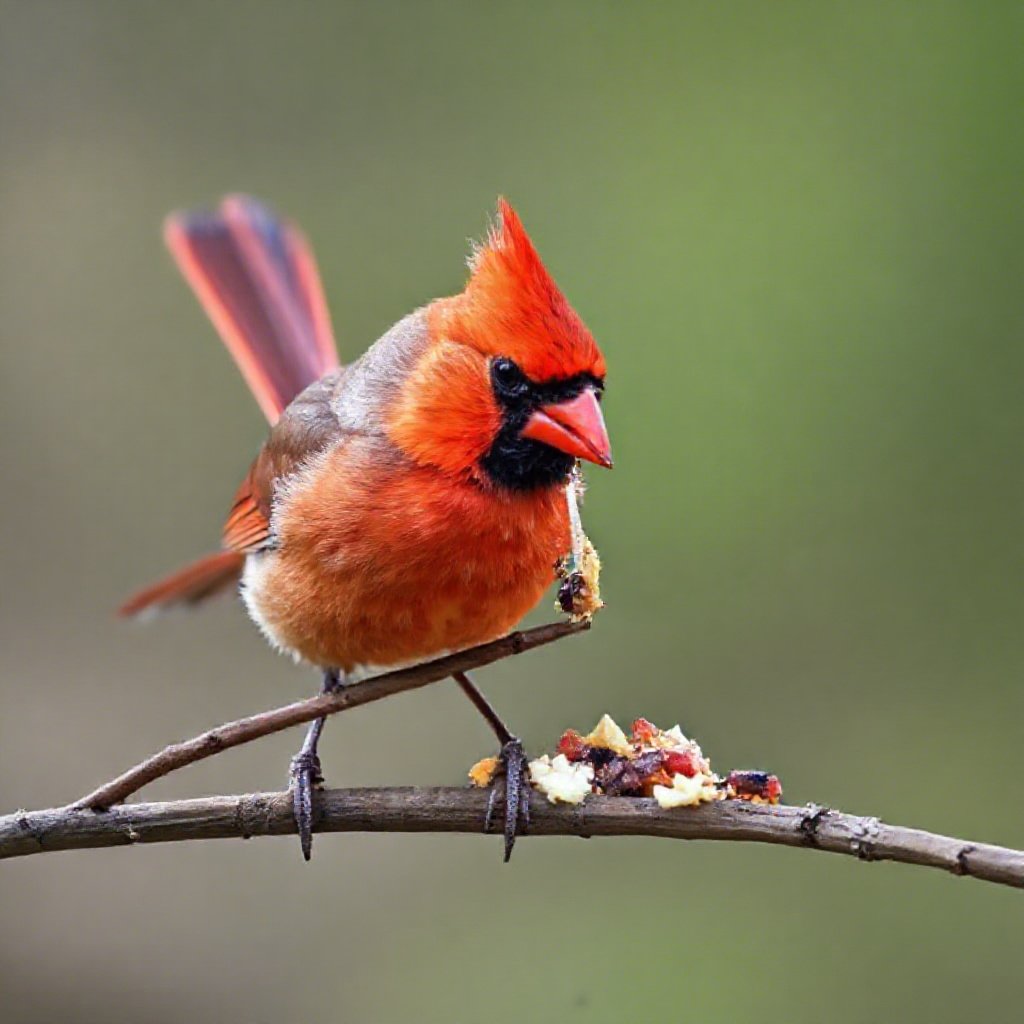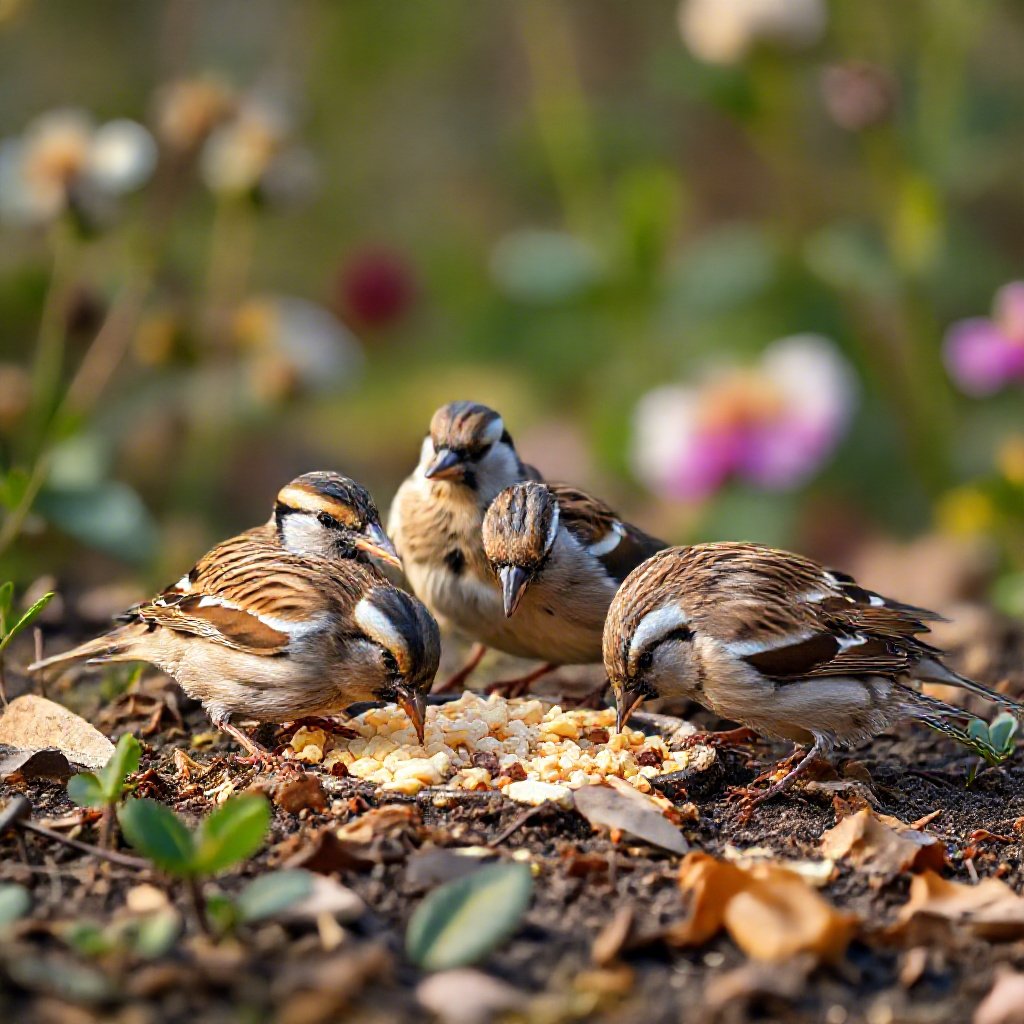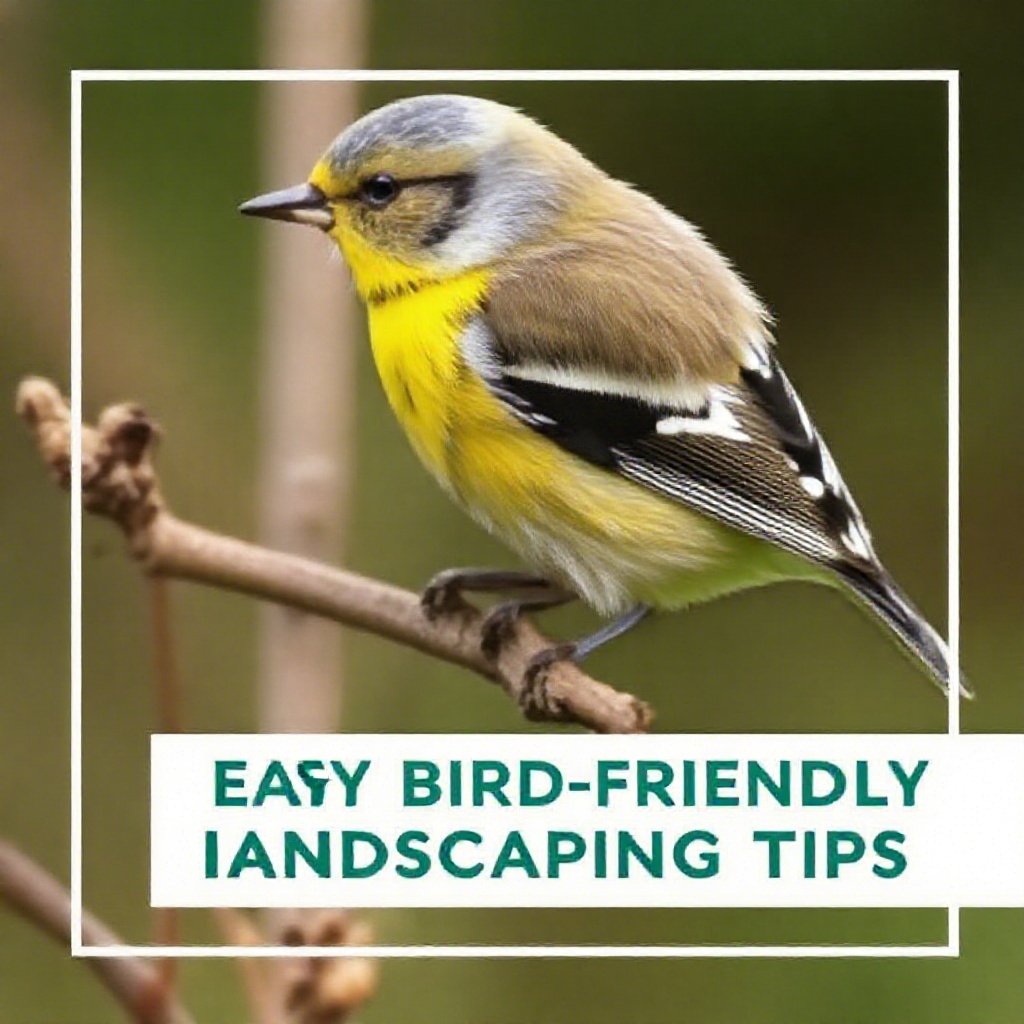Creating a Bird-Friendly Garden
Want to turn your backyard into a bird paradise? It’s easier than you think! Let’s chat about why native plants are the secret sauce and how they can make your garden a bird haven.
Why Native Plants Matter
Native plants are like the VIP section for birds. They attract insects, which are basically bird snacks (Joe Gardener). Plus, they help keep the local ecosystem in check. These plants also give pollinators like bees and butterflies a place to crash, offering nectar, pollen, and even spots for caterpillars to munch on.
| Benefits of Native Plants | Impact on Birds |
|---|---|
| Food and shelter for insects | Birds get more to eat |
| Support for pollinators | Birds benefit from a healthy pollinator population |
| Low maintenance | Less work for you—no constant watering or pruning |
| Ecosystem balance | A happy home for birds |
Need more tips? Check out our bird-friendly garden design guide.
Helping Bird Populations
Birds aren’t just pretty to look at—they’re like the unsung heroes of your garden. They help spread seeds, pollinate flowers, and keep pesky insects in check (Joe Gardener). But they need the right habitat to thrive. Adding native plants to your garden can make a big difference.
The National Audubon Society is on a mission to get gardeners to plant a million bird-friendly, native plants this year (Joe Gardener). Whether you’re a newbie or a seasoned gardener, you can help out.
| Ways to Support Bird Populations | Description |
|---|---|
| Grow native plants | Essential food and shelter for birds |
| Skip the pesticides | Keep those insects safe for birds to eat |
| Set up bird feeders | Extra snacks for our feathered friends |
| Provide water sources | Birds need to drink and bathe too |

Follow these bird-friendly landscaping tips to create a garden that birds will love. For more ways to attract birds, check out our article on how to make your garden bird-friendly.
So, ready to make your garden the hottest bird hangout in town? Let’s get planting!
Making Your Garden a Bird Paradise
Want to turn your backyard into a bird haven? It’s easier than you think! Let’s chat about how to make your garden irresistible to our feathered friends by mixing up your plant choices and keeping things interesting all year round.
Mix It Up with Native Plants
Birds love variety, and so should your garden. Native plants are the way to go—they’re like the all-you-can-eat buffet for birds and bugs. They offer nectar, pollen, and even a place for caterpillars to hang out. Plus, they give bees a spot to nest and help control pests. Here’s a quick rundown:
| Plant Type | Why Birds Love ‘Em |
|---|---|
| Native Flowers | Nectar and bugs galore |
| Shrubs | Cozy spots to nest and hide |
| Trees | Fruits, nuts, and prime nesting real estate |
| Grasses | Seeds and more bugs |
Native plants are the MVPs of your garden. They support local insects, which are basically bird snacks. By planting native species, you’re setting up a bird buffet that keeps the ecosystem in check. The National Audubon Society is all about adding bird-friendly plants to gardens—let’s join the party!
Keep It Interesting All Year
Birds don’t take vacations, so your garden shouldn’t either. Keep things lively all year by picking plants that offer food and shelter no matter the season. Birds like the Carolina Chickadee munch on caterpillars, so having a thriving insect population is a must.
Here’s how to keep your garden buzzing:
- Spring: Go for blooming flowers and shrubs that attract insects.
- Summer: Plant fruit-bearing and flowering species.
- Fall: Add late-blooming flowers and grasses that produce seeds.
- Winter: Evergreen trees and shrubs are your best friends for shelter and food.
| Season | Plant Perks | Why Birds Dig It |
|---|---|---|
| Spring | Blooming flowers, shrubs | Insects and nectar |
| Summer | Fruit-bearing plants | Food and more insects |
| Fall | Seed-producing grasses | Seeds and insects |
| Winter | Evergreen trees/shrubs | Shelter and food |
By thinking about what birds need in each season, you can make sure your garden is always a hotspot. Check out our guides for more tips on making your garden bird-friendly.
Creating a bird paradise in your garden isn’t just good for the birds—it’s a win for you too. You’ll get to enjoy a lively, beautiful space year-round. So, let’s get planting and make our gardens the place to be for birds!
Attracting Bird Species
Want to turn your garden into a bird paradise? It’s easier than you think! The secret sauce? The right food and feeders.
Seed Selection
Picking the right seeds is like setting up a buffet for birds. Different seeds attract different birds, so variety is key. Here’s a quick guide:
| Seed Type | Birds Attracted |
|---|---|
| Black Oil Sunflower Seeds | Finches, Sparrows, Doves |
| Millet | Quail, Towhees, Sparrows |
| Nyjer (Thistle) | Goldfinches, Siskins, Redpolls |
| Safflower | Cardinals, Grosbeaks, Chickadees |

Birds like finches, quail, and sparrows munch on seeds and help keep weeds in check. Plus, planting native plants can give birds a natural snack bar with berries, seeds, and bugs.
Installing Bird Feeders
Feeders are like bird restaurants. Different feeders attract different diners:
- Seed Feeders: Perfect for a mix of seed-loving birds.
- Suet Feeders: Packed with calories, these are a hit in winter. Woodpeckers and chickadees love them.
- Hummingbird Feeders: These hold nectar, drawing in those speedy little hummingbirds.
| Feeder Type | Birds Attracted |
|---|---|
| Seed Feeders | Finches, Sparrows, Cardinals |
| Suet Feeders | Woodpeckers, Nuthatches, Chickadees |
| Hummingbird Feeders | Hummingbirds |
Trees and shrubs can double as bird hotels, offering food and shelter. Hang feeders, nesting boxes, or birdhouses on them to make your garden even more inviting.
By choosing the right seeds and feeders, you can turn your garden into a bird haven. For more tips, check out our bird-friendly garden design and landscaping ideas. Happy bird-watching!
Essential Resources for Your Feathered Friends
Birdbaths: A Splash of Joy
Birdbaths are a game-changer for any bird-friendly garden. They provide clean water for drinking and bathing, turning your garden into a bustling bird haven. The gentle sound of trickling water can lure birds, making your garden a lively spot (ECOgardener).
| Birdbath Type | Key Features |
|---|---|
| Pedestal Birdbath | Elevated, easy for birds to access |
| Ground Birdbath | Natural look, suits ground-feeding birds |
| Heated Birdbath | Keeps water from freezing in winter |
| Solar Birdbath | Eco-friendly, uses sunlight to keep water moving |
Want to attract a variety of birds? Mix it up with different birdbaths. This way, birds of all sizes and habits can find their perfect spot. For more garden tips, check out our bird-friendly landscaping ideas.
Why Water Matters
A reliable water source is crucial for making your garden bird-friendly. Even a small pond can work wonders, attracting wildlife and creating a bird paradise.
| Water Feature | Benefits |
|---|---|
| Pond | Supports a diverse range of wildlife |
| Stream | Natural look, constant water flow |
| Fountain | Adds aesthetic value, moving water attracts birds |
| Dripper | Provides a slow, steady water source |
A pond or fountain can draw not just birds but also butterflies and amphibians, making your garden a biodiversity hotspot. If space is tight, even a simple dripper or small birdbath can make a big difference.
By adding birdbaths and other water sources, you can create a welcoming environment for birds and other wildlife. For more tips on attracting birds, check out our guide on attracting birds to your garden.
Cutting Down on Light Pollution
Making your garden a haven for birds isn’t just about the right plants and a birdbath. Light pollution is a sneaky culprit that can mess with bird populations, especially those on the move. Here’s how you can keep your yard bird-friendly and light pollution-free.
Use Shielded Light Fixtures
Unshielded lights are like a beacon for light pollution, sending light every which way, including up into the sky. This can be a real problem for migratory birds. Shielded lights, on the other hand, direct light downwards, cutting down on glare and that annoying sky glow (Audubon Rockies). The International Dark-Sky Association (IDA) has some great examples of shielded vs. unshielded lights and even certifies dark sky-friendly fixtures.
| Light Type | Description | Effectiveness |
|---|---|---|
| Unshielded Lights | Light goes everywhere, including up. | High light pollution |
| Partially Shielded Lights | Light goes down and to the sides. | Moderate light pollution |
| Fully Shielded Lights | Light goes only down. | Low light pollution |
Buying shielded lights straight from the manufacturer is your best bet. Also, pay attention to lumens (how bright the light is) and color temperature (measured in Kelvin). LEDs that give off a cool, blue light can mess with wildlife, so go for warm-colored lights around 2100-2200 Kelvin (Audubon Rockies).
Turn Off Unnecessary Lights
Sometimes, the simplest solution is the best one. Just turn off those outdoor lights when you don’t need them. You can use timers or motion sensors to make sure lights only come on when necessary, or just flip the switch yourself (Audubon Rockies). Here’s a quick rundown:
| Action | Benefit |
|---|---|
| Use Timers | Lights only come on when needed. |
| Install Motion Sensors | Lights activate with movement. |
| Manual Switch-Off | Full control over light usage. |
By following these tips, you can make your garden a safer place for birds. Want more tips on creating a bird-friendly garden? Check out our articles on bird-friendly garden design and attracting birds to your garden.
How Native Plants Help Our Feathered Friends
Want to make your garden a bird paradise? Let’s talk about how native plants can turn your backyard into a haven for birds, especially those adorable chickadees.
Caterpillar Buffet
Native plants are like a five-star buffet for caterpillars, which are the main course for many birds, especially during breeding season. Chickadees, for example, need a ton of these little critters to feed their young. By planting native species, you’re basically setting up an all-you-can-eat buffet for them.
Here’s a quick comparison of how many caterpillar species different plants support:
| Plant Type | Average Caterpillar Species Supported |
|---|---|
| Native Plants | 70 – 100 |
| Non-Native Plants | 5 – 10 |
So, if you want to see more birds, especially songbirds like chickadees, go native. These plants not only feed the birds but also keep the whole ecosystem buzzing with life.
Chickadee-Friendly Zones
Chickadees are picky eaters and love areas with trees that host lots of caterpillars. Oaks, native cherries, birch, willow, and hickory are their top picks. They tend to avoid places overrun with non-native plants because, frankly, the food options there are pretty lousy.
To keep chickadees happy and thriving, aim for a garden with at least 70% native plants. If non-native plants take up more than 30% of your garden, chickadee numbers start to drop.
| Plant Biomass Composition | Chickadee Population Impact |
|---|---|
| 70% Native / 30% Non-Native | Stable Population |
| > 30% Non-Native | Population Decline |
Stick to these guidelines, and you’ll have a garden full of chirping chickadees and other birds. Plus, native plants make your garden healthier and more vibrant overall.
For more tips on making your garden a bird magnet, check out our articles on bird-friendly garden design, attracting birds to your garden, and how to make your garden bird-friendly.

My name is Michelle Warren, and I’m the founder of Peaceful Gardening. As a 10-year breast cancer survivor, I’ve discovered the profound therapeutic power of gardening. This journey has not only helped me recover but has also become my passion and a source of ongoing peace and joy.
Peaceful Gardening was born from my desire to share the healing benefits of gardening with others. Whether you’re facing health challenges, dealing with stress, or simply looking to connect more deeply with nature, this space is for you.
Over the past decade, I’ve cultivated not just plants, but a deep understanding of how gardening can positively impact mental health. I’ve worked with local community gardens, led workshops on mindful gardening practices, and collaborated with mental health professionals to develop gardening-based stress reduction programs.
Peaceful Gardening was born from my desire to share the healing benefits of gardening with others. Whether you’re facing health challenges, dealing with stress, or simply looking to connect more deeply with nature, this space is for you.
Here, you’ll find evidence-based advice on using gardening as a tool for mindfulness, stress relief, and emotional healing. I share personal stories, practical tips, and scientifically-backed information on how to create your own therapeutic garden space, no matter the size of your yard or balcony.
My mission is to help you discover the joy, peace, and healing that comes from nurturing plants and connecting with nature. Join me in exploring how the simple act of tending to a garden can transform your mental and emotional wellbeing.
Welcome to Peaceful Gardening – let’s grow together towards better mental health!”

